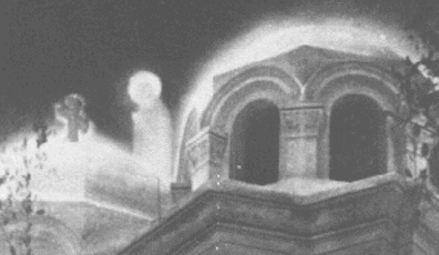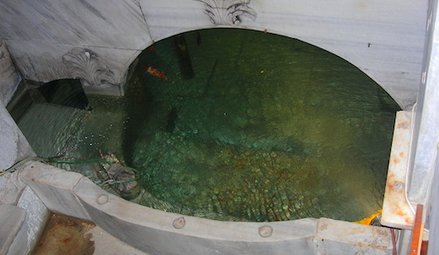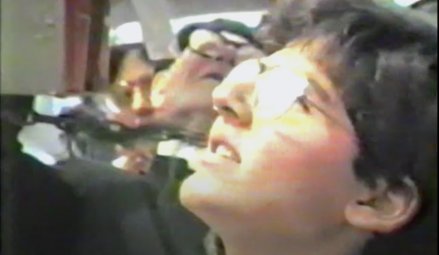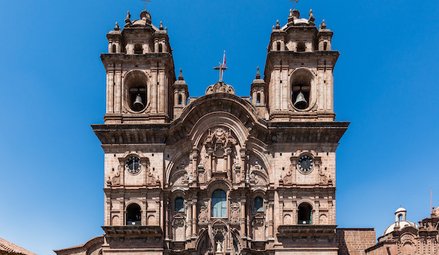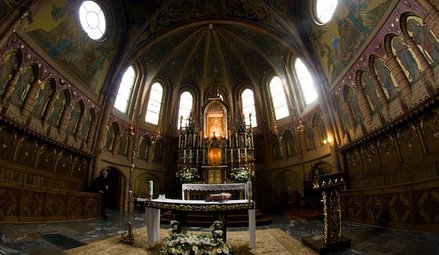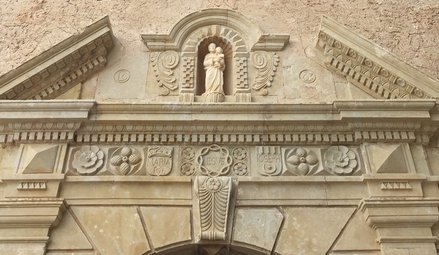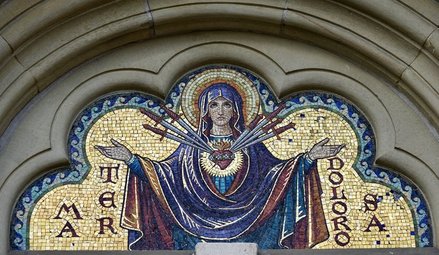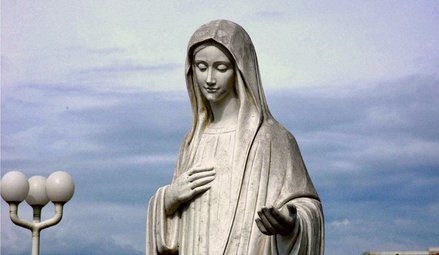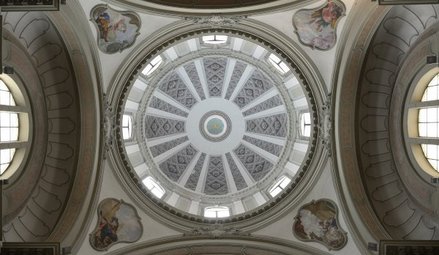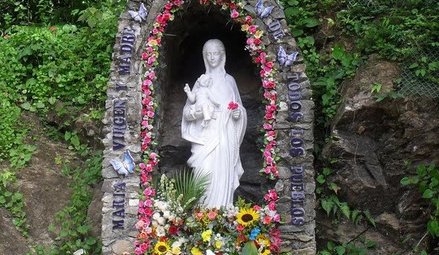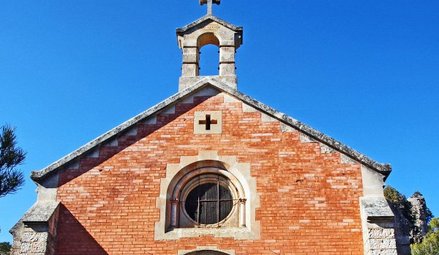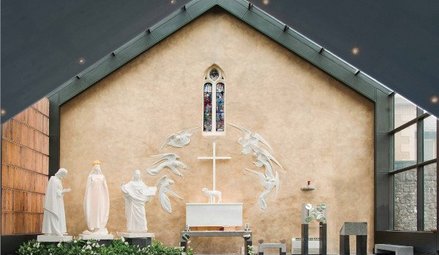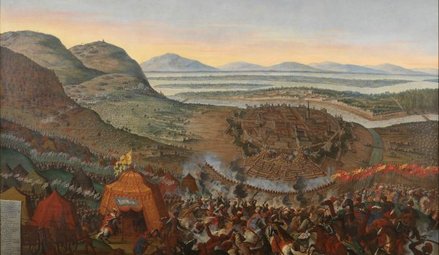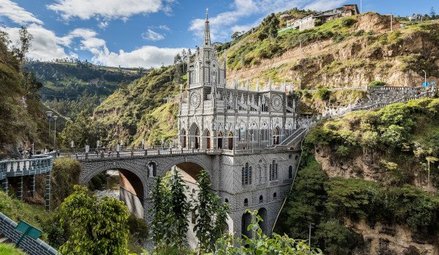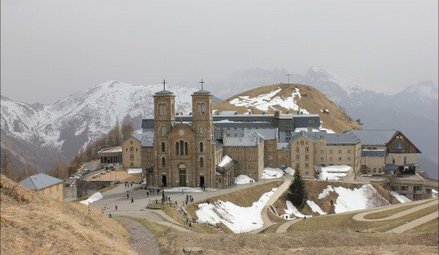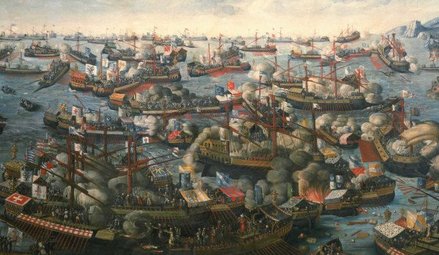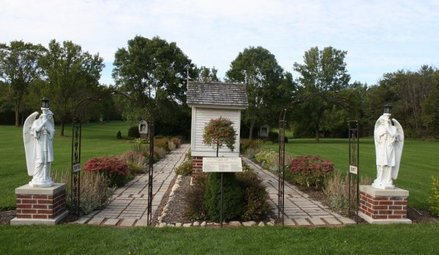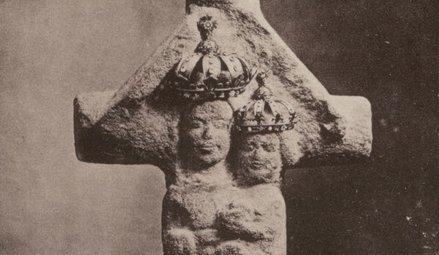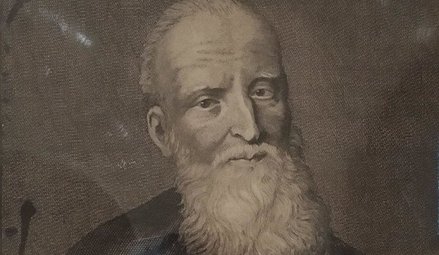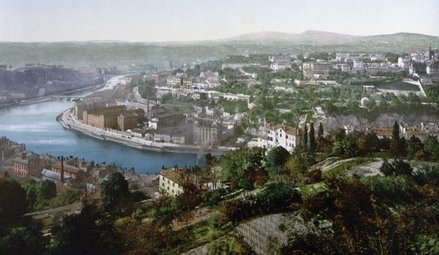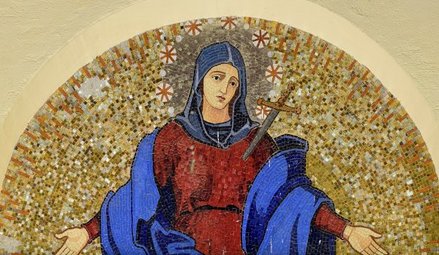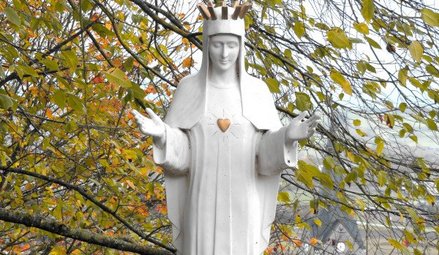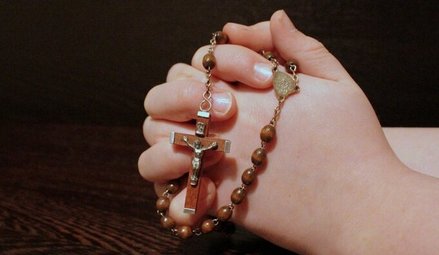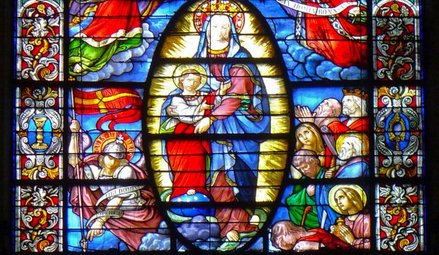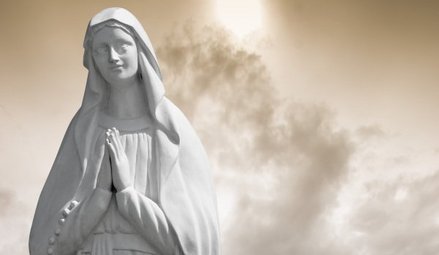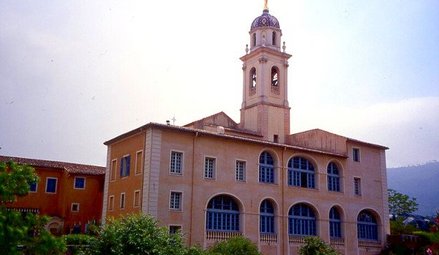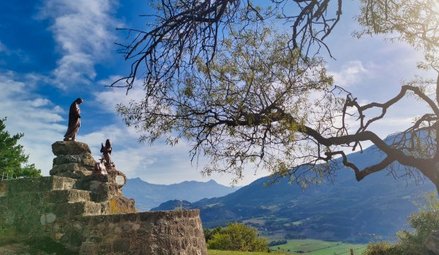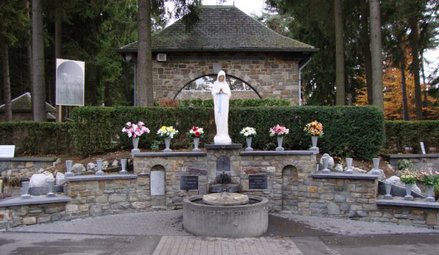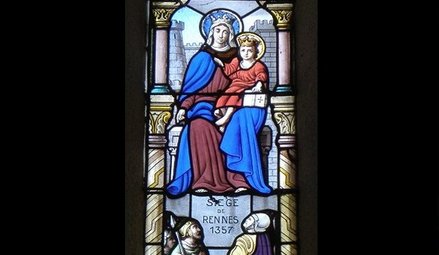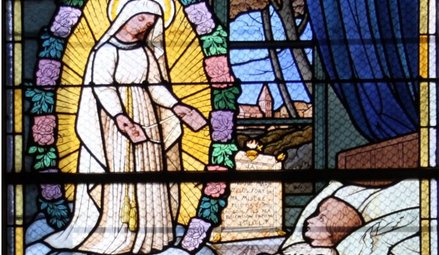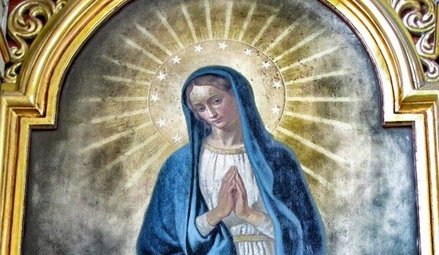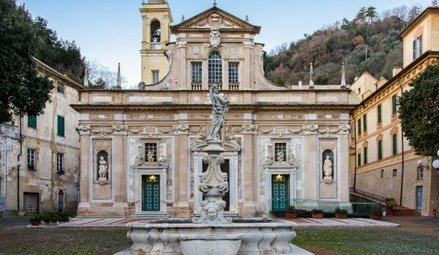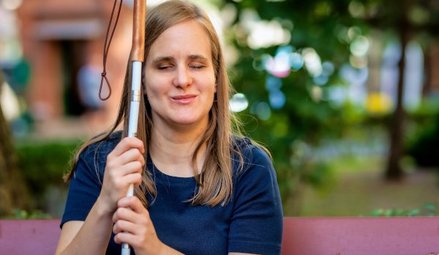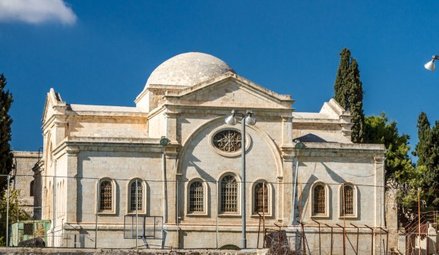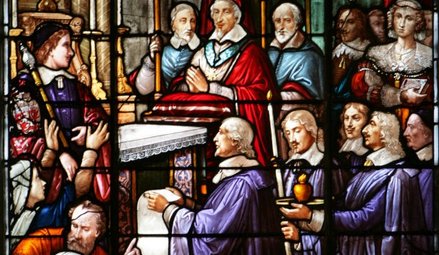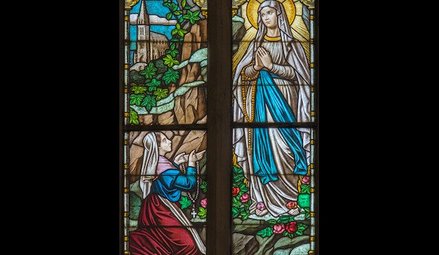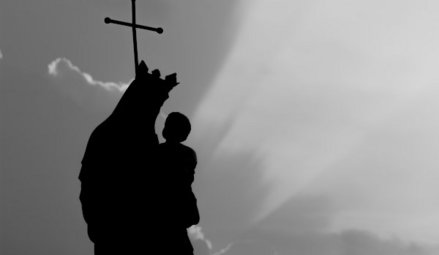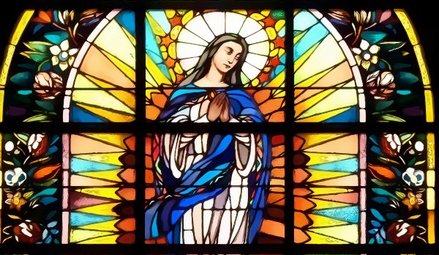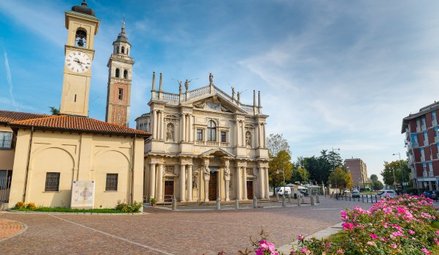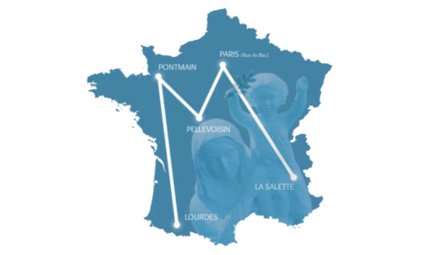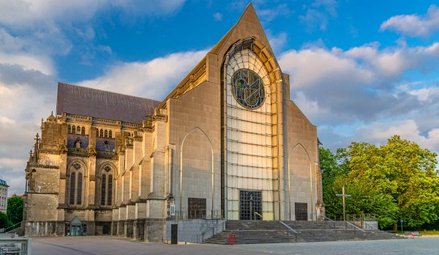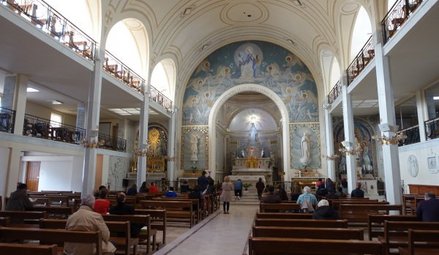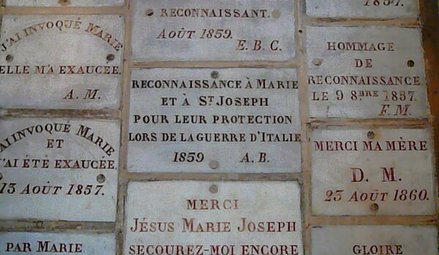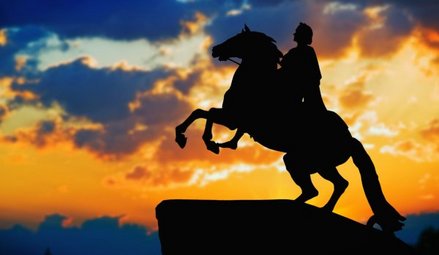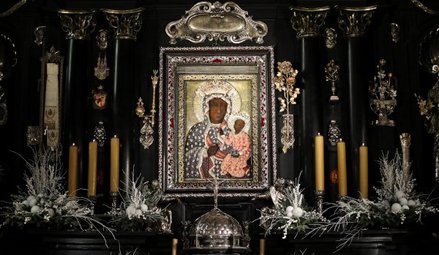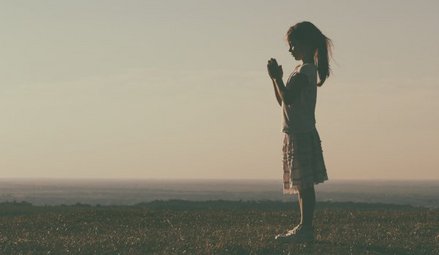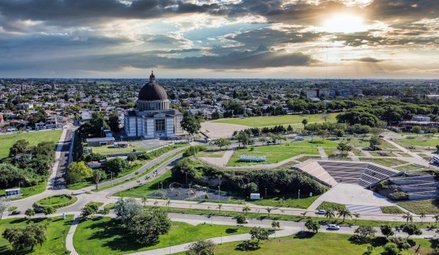- All the reasons
- By theme
- Jesus
- Mary
- The Church
- The Bible
- The authors of the Gospels were either eyewitnesses or close contacts of those eyewitnesses
- Onomastics support the historical reliability of the Gospels
- The New Testament was not altered
- The New Testament is the best-attested manuscript of Antiquity
- The Gospels were written too early after the facts to be legends
- Archaeological finds confirm the reliability of the New Testament
- The criterion of embarrassment proves that the Gospels tell the truth
- The dissimilarity criterion strengthens the case for the historical reliability of the Gospels
- 84 details in Acts verified by historical and archaeological sources
- The unique prophecies that announced the Messiah
- The time of the coming of the Messiah was accurately prophesied
- The prophet Isaiah's ultra accurate description of the Messiah's sufferings
- Daniel's "Son of Man" is a portrait of Christ
- The Apostles
- The martyrs
- Saint Blandina and the Martyrs of Lyon: the fortitude of faith (177 AD)
- Thomas More: “The king’s good servant, but God’s first”
- The Martyrs of Compiègne (1794)
- The Vietnamese martyrs Father Andrew Dung-Lac and his 116 companions (17th-19th centuries)
- Blaise Marmoiton: the epic journey of a missionary to New Caledonia (d. 1847)
- Saint Maximilian Kolbe, Knight of the Immaculate (d. 1941)
- The monks
- Saint Benedict, father of Western monasticism (d. 550)
- Saint Bruno the Carthusian (d.1101): the miracle of a hidden life
- Blessed Angelo Agostini Mazzinghi: the Carmelite with flowers pouring from his mouth (d. 1438)
- Monk Abel of Valaam's accurate prophecies about Russia (d. 1841)
- The more than 33,000 miracles of Saint Charbel Maklouf (d. 1898)
- Saint Pio of Pietrelcina (d. 1968): How God worked wonders through "a poor brother who prays"
- The saints
- Saints Anne and Joachim, parents of the Virgin Mary (19 BC)
- Saint Nazarius, apostle and martyr (d. 68 or 70)
- Ignatius of Antioch: successor of the apostles and witness to the Gospel (d. 117)
- Saint Gregory the Miracle-Worker (d. 270)
- Saint Martin of Tours: patron saint of France, father of monasticism in Gaul, and the first great leader of Western monasticism (d. 397)
- Saint Lupus, the bishop who saved his city from the Huns (d. 623)
- Saint Dominic of Guzman (d.1221): an athlete of the faith
- Saint Francis, the poor man of Assisi (d. 1226)
- Saint Anthony of Padua: "everyone’s saint"
- Saint Simon Stock receives the scapular of Mount Carmel from the hands of the Virgin Mary
- The unusual boat of Saint Basil of Ryazan
- The extraordinary conversion of Michelina of Pesaro
- Saint Rita of Cascia: hoping against all hope
- Saint Anthony Mary Zaccaria, physician of bodies and souls (d. 1539)
- Saint Ignatius of Loyola (d. 1556): "For the greater glory of God"
- Brother Alphonsus Rodríguez, SJ: the "holy porter" (d. 1617)
- Martin de Porres returns to speed up his beatification (d. 1639)
- Saint John Vianney (d. 1859): the global fame of a humble village priest
- Saints Louis and Zelie Martin, the parents of Saint Therese of Lisieux (d. 1894 and 1877)
- Saint Faustina, apostle of the Divine Mercy (d. 1938)
- Brother Marcel Van (d.19659): a "star has risen in the East"
- Doctors
- The mystics
- Visionaries
- María de Jesús de Ágreda, abbess and friend of the King of Spain
- Sister Benigna Consolata: the "Little Secretary of Merciful Love" (d. 1916)
- The 700 extraordinary visions of the Gospel received by Maria Valtorta (d. 1961)
- The amazing geological accuracy of Maria Valtorta's writings (d. 1961)
- Maria Valtorta's astronomic observations consistent with her dating system
- Discovery of an ancient princely house in Jerusalem, previously revealed to a mystic (d. 1961)
- The popes
- The great witnesses of the faith
- Christian civilisation
- The depth of Christian spirituality
- Christ's interventions in history
- Marian apparitions and interventions
- The Life-giving Font of Constantinople
- Cotignac: the first apparitions of the Modern Era (1519)
- The Virgin Mary delivers besieged Christians in Cusco, Peru
- The victory of Lepanto and the feast of Our Lady of the Rosary (1571)
- The apparitions to Brother Fiacre (1637)
- Our Lady of Nazareth in Plancoët, Brittany (1644)
- Saint Joseph’s apparitions in Cotignac, France (1660)
- The Holy Name of Mary and the major victory of Vienna (1683)
- Heaven and earth meet in Colombia: the Las Lajas shrine (1754)
- At La Salette, Mary wept in front of the shepherds (1846)
- Our Lady of Champion, Wisconsin: the first and only approved apparition of Mary in the US (1859)
- Gietrzwald apparitions: heavenly help to a persecuted minority
- The silent apparition of Knock Mhuire in Ireland (1879)
- Mary "Abandoned Mother" appears in a working-class district of Lyon, France (1882)
- Fontanelle-Montichiari apparitions of Our Lady "Rosa Mystica" (1947)
- Zeitoun apparitions
- Maria Esperanza Bianchini and Mary, Mary, Reconciler of Peoples and Nations (1976)
- Luz Amparo and the El Escorial apparitions
- The extraordinary apparitions of Medjugorje and their worldwide impact
- The Virgin Mary heals a teenager, then appears to him dozens of times (1986)
- Angels and their manifestations
- Exorcisms in the name of Christ
- A wave of charity unique in the world
- Saint Camillus de Lellis, reformer of hospital care (c. 1560)
- Saint Vincent de Paul (d. 1660), apostle of charity
- Frédéric Ozanam, inventor of the Church's social doctrine (d. 1853)
- Pier Giorgio Frassati (d.1925): heroic charity
- Mother Teresa of Calcutta (d. 1997): an unshakeable faith
- Heidi Baker: Bringing God's love to the poor and forgotten of the world
- Amazing miracles
- Miraculous cures
- The royal touch: the divine thaumaturgic gift granted to French and English monarchs (11th-19th centuries)
- With 7,500 cases of unexplained cures, Lourdes is unique in the world (1858-today)
- Mariam, the "little thing of Jesus": a saint from East to West (d.1878)
- The miraculous cure of Blessed Maria Giuseppina Catanea
- Bruce Van Natta's intestinal regrowth: an irrefutable miracle (2007)
- Manouchak, operated on by Saint Charbel (2016)
- How Maya was cured from cancer at Saint Charbel's tomb (2018)
- Preserved bodies of the saints
- Bilocations
- Inedias
- Levitations
- Lacrimations and miraculous images
- Stigmates
- Eucharistic miracles
- Relics
- Jews discover the Messiah
- Max Jacob: a liberal gay Jewish artist converts to Catholicism (1909)
- Edith Stein - Saint Benedicta of the Cross: "A daughter of Israel who, during the Nazi persecutions, remained united with faith and love to the Crucified Lord, Jesus Christ, as a Catholic, and to her people as a Jew"
- Patrick Elcabache: a Jew discovers the Messiah after his mother is miraculously cured in the name of Jesus
- Cardinal Aron Jean-Marie Lustiger (d. 2007): Chosen by God
- Muslim conversions
- Buddhist conversions
- Atheist conversions
- Testimonies of encounters with Christ
- Near-death experiences (NDEs) confirm Catholic doctrine on the Four Last Things
- The NDE of Saint Christina the Astonishing, a source of conversion to Christ (1170)
- Blessed Dina Bélanger (d. 1929): loving God and letting Jesus and Mary do their job
- Gabrielle Bossis: He and I
- André Levet's conversion in prison
- Journey between heaven and hell: a "near-death experience" (1971)
- Providential stories
- The superhuman intuition of Saint Pachomius the Great
- The supernatural reconciliation of the Duke of Aquitaine (1134)
- Joan of Arc: "the most beautiful story in the world"
- John of Capistrano saves the Church and Europe (1456)
- How Korea evangelized itself (18th century)
- The prophetic poem about John Paul II (1840)
- Thérèse of Lisieux saved countless soldiers during the Great War
- In 1947, a rosary crusade liberated Austria from the Soviets (1946-1955)
- The discovery of the tomb of Saint Peter in Rome (1949)
- A protective hand saved John Paul II and led to happy consequences (1981)
- Edmond Fricoteaux's providential discovery of the statue of Our Lady of France (1988)
- The Virgin Mary frees a Vietnamese bishop from prison (1988)
- Who are we?
- Make a donation
EVERY REASON TO BELIEVE
Les apparitions et interventions mariales
n°155
Paris and Cotignac (France)
1609-1684
The apparitions to Brother Fiacre
In 1637, after twenty-three years of marriage, the King of France Louis XIII and his wife Anne of Austria were still without a child. That year, an unknown religious named Brother Fiacre saw the Virgin Mary who asked that three public novenas be offered in her honour: the first at the cathedral of Notre-Dame de Paris, the second at the church of Notre-Dame-des-Victoires (Paris), and the last at the shrine of Cotignac (France, Var department), to ask God to grand a heir to the throne. The royal couple began the public novenas, and Louis XIII vowed to consecrate the kingdom of France to the Virgin Mary if she granted them the grace of having a child and heir. Louis XIV "Dieudonné" ("God-given") was born precisely nine months after the end of the series of novenas.
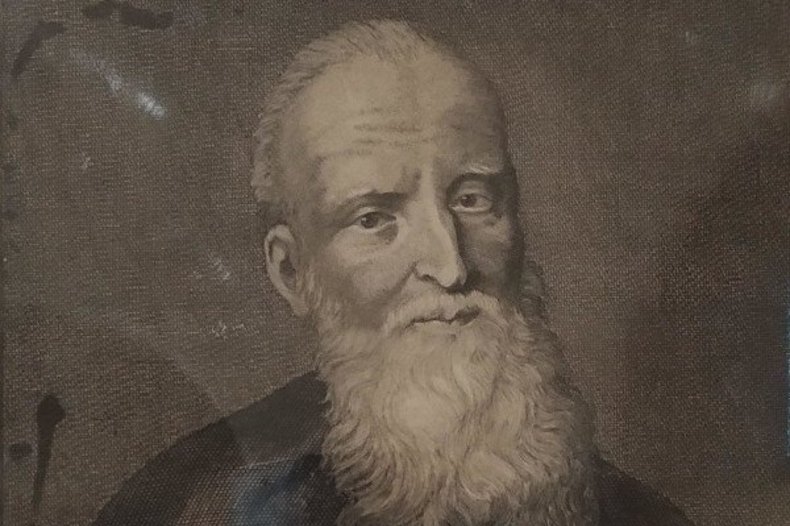
Engraving of Frère Fiacre / © CC BY-SA 4.0/Christophe Moustie
Reasons to believe:
- The origin, writing and long posterity of the "Vow of Louis XIII" are historically attested thanks to the manuscripts contained in eight boxes of archives (Archives des Affaires étrangères, 56, 244, 257, 821, 822, 827, 828 and 831), in addition to the National Archives (S4648b and L499) and Colbert's Collection des Cinq Cents at the BNF (National Library of France), in which the original edition of the royal vow can be found. This text consecrates the kingdom of France, the king and his subjects under the protection of the Virgin Mary. It includes a set of promises and acts of religious devotion to be performed by the king and the entire population, essentially on the occasion of the feast of the Assumption of the Virgin (August 15).
- Brother Fiacre was not known to be delirious or disturbed, or a mythomaniac. He was a trustworthy religious, respected by his Parisian community.
- The chronology of events confirms the truth of the apparition and message of the Virgin Mary to Brother Fiacre: the future Louis XIV was born precisely nine months after the end of the three novenas requested by Mary, made in three different parts of the country.
- In addition, the Mother of God gave the friar a perfect description of the church in Cotignac and a real painting it contained - depicting the Virgin Mary - in the vision of October 27, 1637. Brother Fiacre had never left Paris and was completely unaware of the existence of that painting. The details given by the Virgin were verified by the governor and bishop of the region of Cotignac, and eventually by Brother Fiacre himself. What he saw perfectly matched and confirmed this vision, given as a sign and proof.
- Brother Fiacre, a humble and obscure friar, succeeded in bringing the happy prophecy to the king and queen in record time. Only the veraciy of the four alleged apparitions of the Virgin Mary can account for such improbable events.
- The "Vow of Louis XIII" was not a private document but a legislative, binding royal act, duly approved by the members of parliament, the political leaders of the day and Louis XIII's successors (Louis XIV, Louis XV and Louis XVIII all perpetuated the vow), which also lends credence to the Marian apparitions that inspired this vow.
Summary:
Denis Anthaume, in religion Brother Fiacre de Sainte-Marguerite, was born on February 21, 1609, from a very modest social background in Marly-la-Ville (France, Val d'Oise). He was partially illiterate and learned the trade of potter early in his life. For a time, he worked in Montmartre, near the convent of the Discalced Augustinians, rising early every morning to attend their conventual mass.
In 1628, Denis tried to join this convent, but was not admitted. He then asked the Virgin Mary to help him, and was admitted to that same community twenty months later as a "lay" brother - meaning that he was entrusted with manual work. He was an unremarkable religious, obedient, zealous in carrying out the tasks entrusted to him, and, above all, a man of prayer and faith.
On October 27, 1637, Brother Fiacre had a strong "interior illumination": he felt he should entreat the Virgin Mary to intercede so that God would give a successor to Louis XIII, who had been married for twenty-three years and had no children. On the night of November 3, the Virgin Mary appeared to him four times. As Br. Fiacre prayed, he first heard the voice of a small child. Surprised, he turned his head and at that moment saw the Virgin in a beautiful light, dressed in a blue dress strewn with stars, her hair hanging over her shoulders, sitting on a chair, holding a child. "Don't be afraid, I am the Mother of God" she said to the friar. After a few seconds, she added, pointing to the little boy sitting on her lap: "This is not my Son, this is the child God wants to give to France."The Virgin asked Queen Anne for three public novenas: one said publicly at the cathedral of Notre-Dame de Paris, one at the church of Notre-Dame-des-Victoires (Paris) and the last at the church of Cotignac (France, Var), after which she promised her a son.
During the fourth and last apparition, Mary said the following: "To show that I want the Queen to be told to make novenas in my honour, here is the same image that is in Notre-Dame-des-Grâces, in Provence [Cotignac], and the way the church looks." At that moment, Brother Fiacre clearly saw the Marian painting at the church of the Provençal shrine, "half-round, all azure and strewn with stars near the altar". And to confirm her words, Mary told him that he would find that same image of her inside the church of Cotignac!
The next day, Brother Fiacre reported the apparitions to his superiors. A report was drawn up immediately. The Augustinians informed Cardinal François de La Rochefoucauld that a modest, simple and pious brother had been visited by the Mother of God on the subject of the royal descent. The prelate, Grand Chaplain of France, former adviser to Henry IV and President of the King's Council, was to play a key role in this affair: he wrote a letter to the Governor of Provence and the Bishop of Fréjus (France, Var) to verify Brother Fiacre's statements, particularly with regard to the topography and decoration of the shrine church. Following the confirmation by his correspondents, the cardinal put all his heart in making Mary's requests happen.
The improbable became reality: within a few days, Brother Fiacre was received by the royal couple Anne of Austria and Louis XIII, who agreed to organise the three novenas requested by Mary, in the places chosen by her. A special bond developped between the royal couple and the humble friar. The scheduled novenas began on November 8, 1637, and concluded on the following December. In mid-January 1638, the queen announced she was pregnant. The following month, Brother Fiacre had another audience at the court. The king and queen asked him to go to Cotignac to verify the existence and description of the painting of the Virgin he had seen in a vision, and to pray for them and for the happy outcome of the pregnancy.
Brother Fiacre set off for the south of France in the company of Brother Jean Chrysostome, sub-prior of the Paris convent. When he arrived at the church of Notre-Dame-des-Grâces in Cotignac, Fiacre couldn't hide his disappointment: while the place did indeed resemble his vision, he couldn't find the painting of Mary. Had he been the victim of an illusion? "It's impossible," he said to himself as he left the church. Just then, the two monks ran into the church's sacristan. They quickly asked him if the painting existed. The man explained that it had been replaced a fortnight earlier by a newer painting and that it had simply been taken to the sacristy. On discovering the painting, Fiacre was very moved to see that it looked exactly as in his vision.
On February 10, 1638, the sovereign promised to consecrate the kingdom of France to the Virgin Mary if an heir was given to him. This was the famous "Vow of Louis XIII", which provided for the consecration of the main chapels in each French church to the Virgin Mary, if it was not already the case. The vow was confirmed by Louis XIV in 1650, Louis XV in 1738 and Louis XVIII in 1814. Published by letters patent, after consultation with the Parliament of Paris, it was a legislative document of national scope: this text consecrates the kingdom of France, the king and his subjects under the protection of the Virgin Mary. It includes a set of promises and acts of religious devotion to be performed by the king and the entire population, essentially on the occasion of the feast of the Assumption of the Virgin (August 15).
On September 5, 1638, nine months to the day after the end of the novenas, Louis "Dieudonné" ("God-given"), the future Louis XIV, was born. He would succeed his father Louis XIII sixteen years later.
In just a few months, Fiacre went from anonymity to celebrity. Thousands of small images of him were printed and often hung in town carriages, hence his name (Note: "fiacre" is the French word for "cab"). In 1644, Anne of Austria asked him to bring to Cotignac a painting representing the "vow of Louis XIII" (this painting was destroyed during the Revolution) and to pray for herself and the young Louis. Ten years later, Fiacre was invited to attend the coronation of Louis XIV, but he declined out of humility. In 1661, the Sun King asked him to bring to Cotignac a copy of his marriage contract with Marie-Thérèse and a copy of the Treaty of the Pyrenees, by which France and Spain had just made peace. The friendship between the king and Fiacre endured. In 1684, the Parisian friar obtained permission from Louis XIV for his heart to be placed in the church at Cotignac after his death. Four months later, after God had called his servant back to himself, two religious arrived at Notre-Dame-de-Grâces Shrine in Cotignac, carrying a reliquary in which Fiacre's heart had been placed, as the former modest potter had wished, under the altar stairs.
Patrick Sbalchiero
Beyond reasons to believe:
The legislative nature of Louis XIII's vow destroys the theories attributing the authorship of this text to influencial ecclesiastics like Richelieu, politicians or women of the court like Madame de La Fayette. The king, in whose name all laws were enacted during the Old Regime, was the sole author and initiator of the vow.
Going further:
René Laurentin and Patrick Sbalchiero, Dictionnaire des "apparitions" de la Vierge Marie, Paris, Fayard, 2007, p. 695-696.









